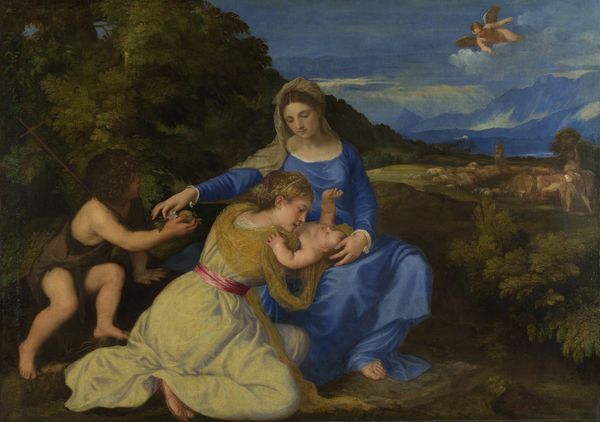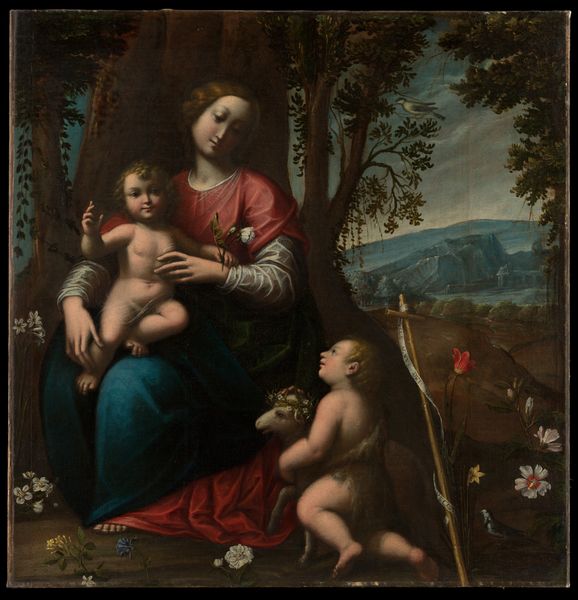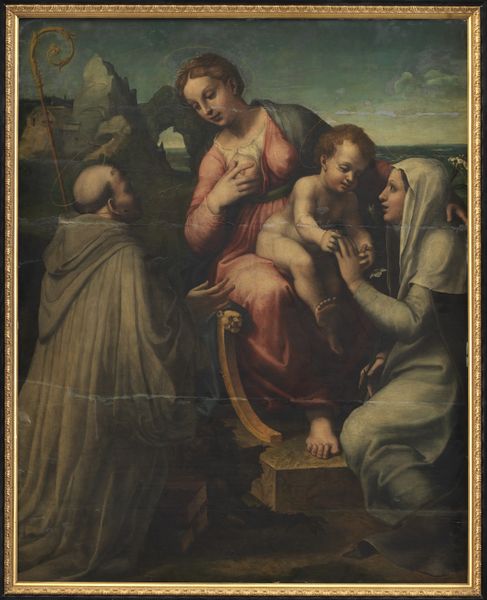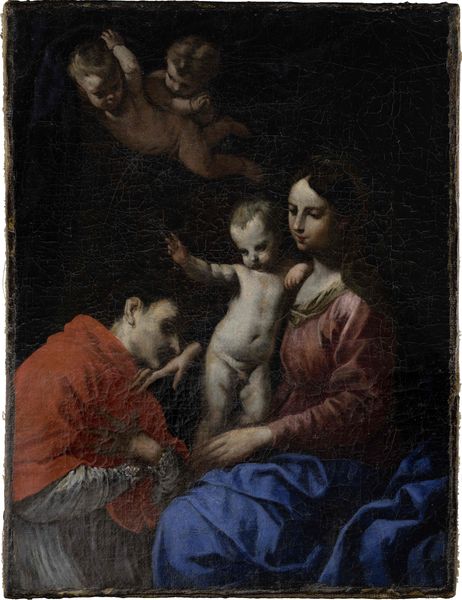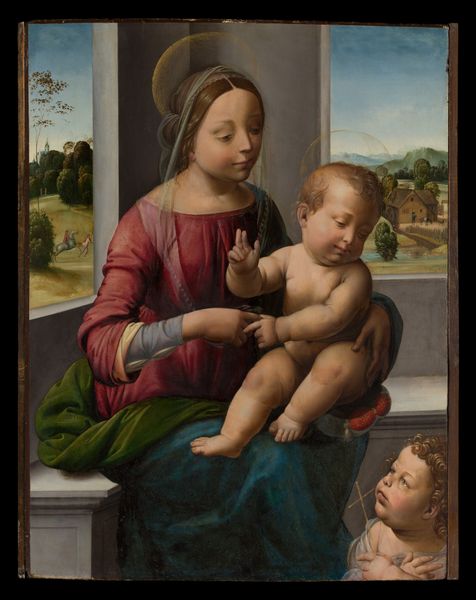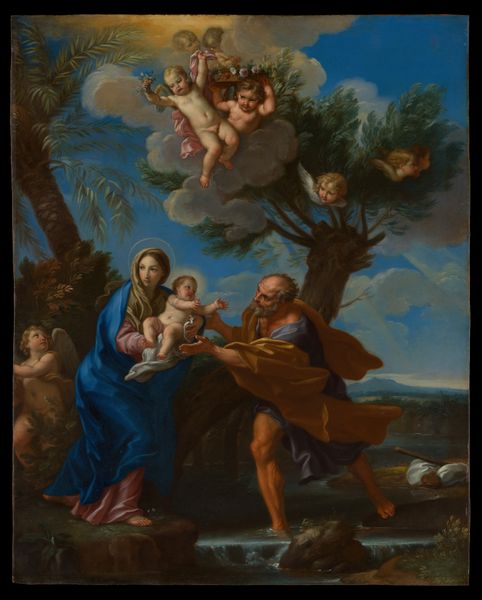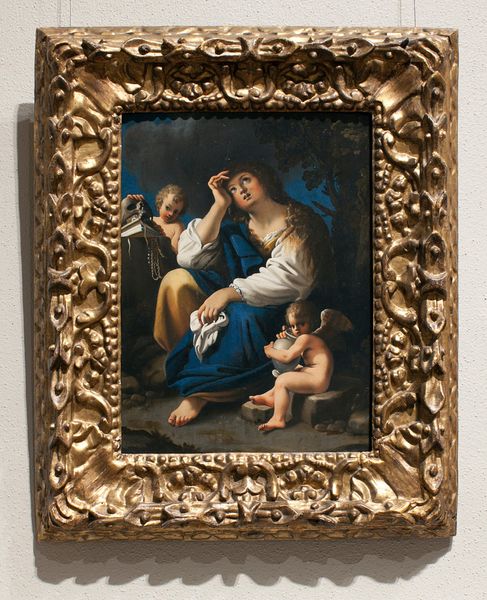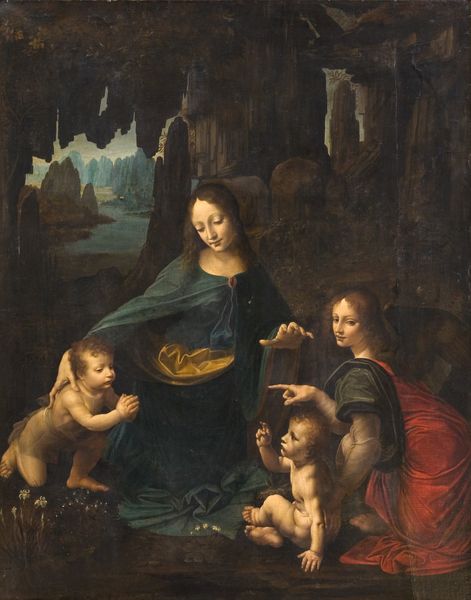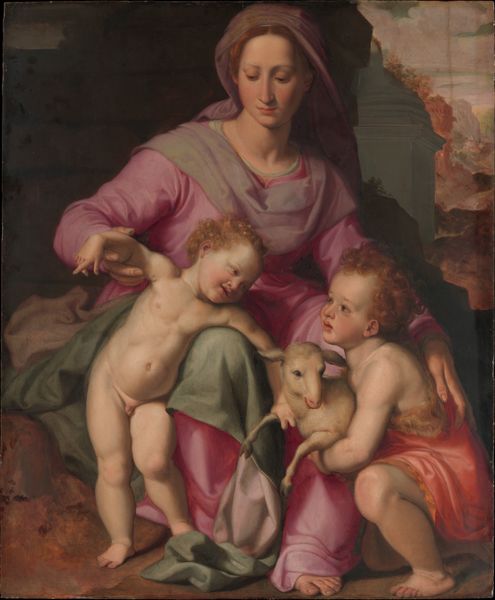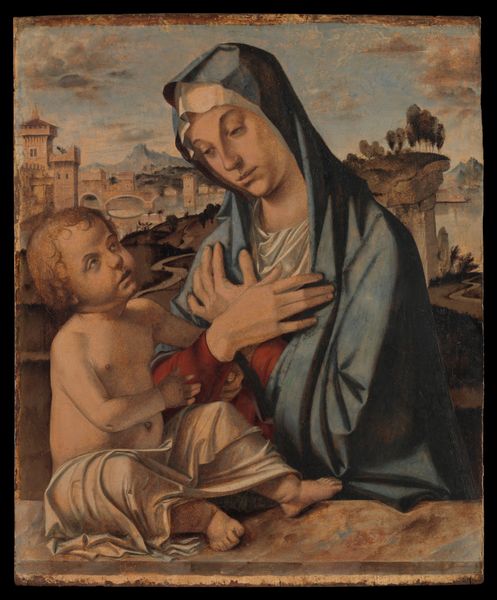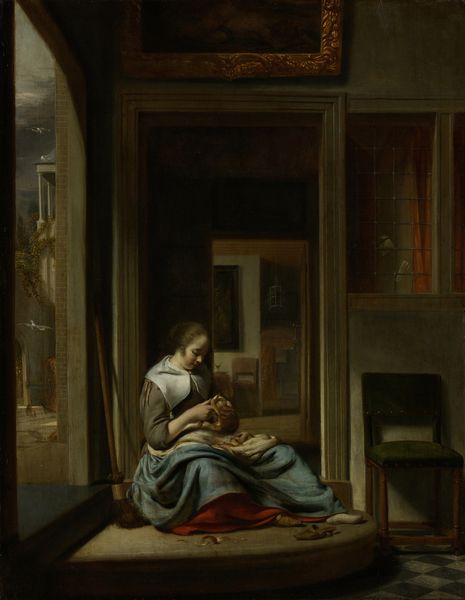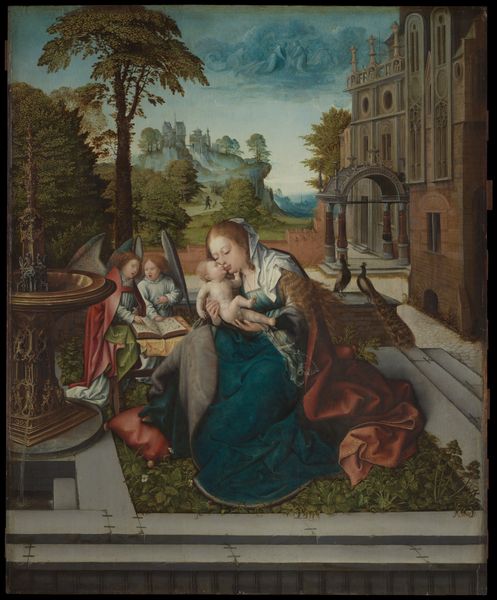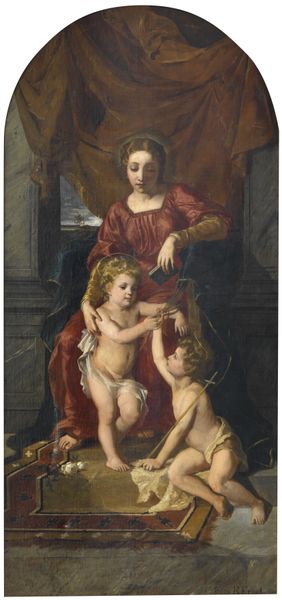
painting, oil-paint, oil-on-canvas
#
portrait
#
allegory
#
baroque
#
painting
#
oil-paint
#
landscape
#
figuration
#
history-painting
#
academic-art
#
italian-renaissance
#
oil-on-canvas
#
portrait art
Dimensions: 20 1/4 x 16 3/4 in. (51.4 x 42.55 cm)
Copyright: Public Domain
Editor: Here we have Charles Lebrun's "The Holy Family in Egypt," dating from around 1660, done with oil on canvas. It's quite serene. What captures your attention when you look at this painting? Curator: The thing I always return to with Lebrun is his process. Note how the family seems almost staged against this generic, idealized landscape. We aren't invited into their lived experience of exile, but presented with an icon. Editor: That's interesting. I was focusing on the narrative but hadn't thought about that feeling of… detachment. Curator: Exactly! Consider the social context. Lebrun was Principal Painter to Louis XIV. He wasn't interested in portraying poverty or hardship; he was crafting a visual allegory about piety. The smooth application of the oil paint itself and those classical architectural forms reflect the wealth of the patron and are almost saying something as simple as “nobility”. Editor: So, you are seeing a focus on surface, material and message, versus something spiritual or moving? Curator: Precisely! The value wasn't in evoking emotion, but in conveying status and aligning the monarchy with divine favor. What appears peaceful is actually meticulously constructed labor designed for specific social purposes. Editor: I see that now, that perspective on the artist’s work makes you notice details, not only in this one, but generally. I didn’t think of those implications before, like it’s more than just an image. Thanks! Curator: It is always much more than just an image. Considering how art is made, by whom, and for whom, helps us uncover these subtle but powerful social meanings.
Comments
No comments
Be the first to comment and join the conversation on the ultimate creative platform.
